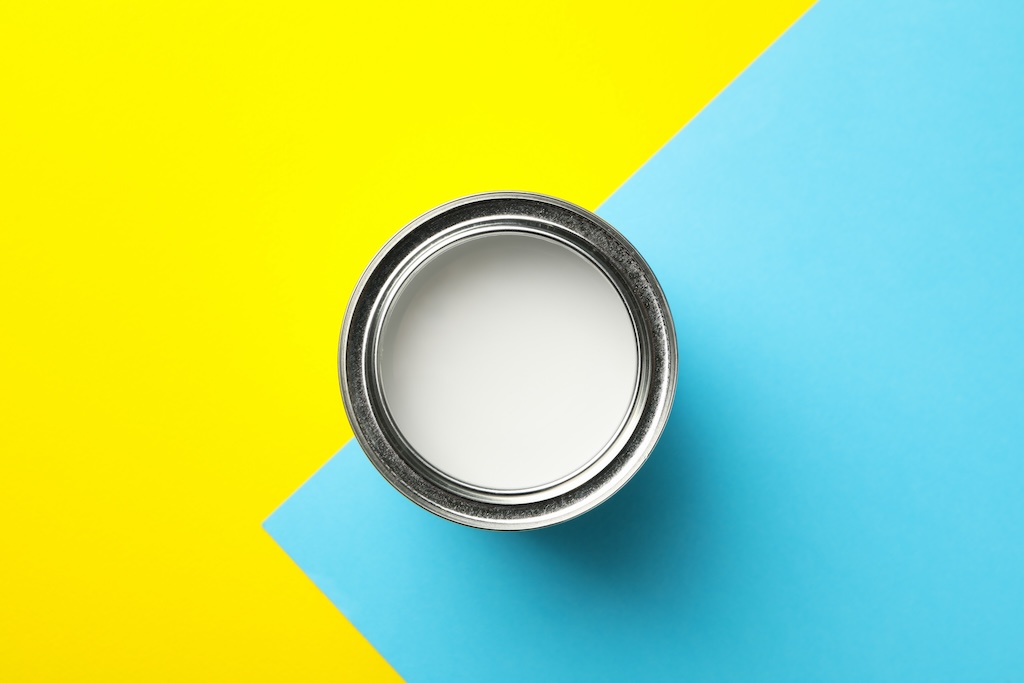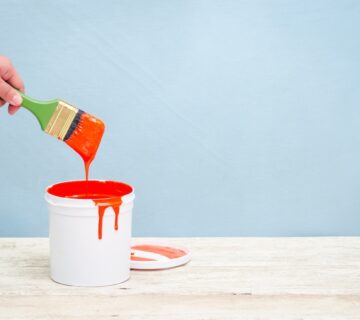When planning a painting project or storing leftover paint, it’s important to understand the shelf life of various paint types. The longevity of paint in its container can vary significantly depending on the type of paint and how it’s stored. Knowing the shelf life helps in determining whether the paint is still usable for future projects or touch-ups. This blog will explore the shelf life of different types of paint and how to maximize their usability over time.
Latex Paint
Latex paint, also known as water-based paint, is popular due to its ease of use and quick drying time. When stored properly, an unopened can of latex paint can last up to 10 years. Once opened, however, its shelf life reduces to around 2-5 years. To maximize its lifespan, ensure the paint can is sealed tightly and stored in a cool, dry place, away from extreme temperatures.
Oil-Based Paint
Oil-based paints are known for their durability and rich finish. They can last up to 15 years when unopened. After opening, their shelf life can range from 2 to 5 years. Oil-based paints should be stored in a similar manner to latex paints — tightly sealed and in a temperature-controlled environment. They are more sensitive to temperature fluctuations, which can cause the paint to separate or gel.
Primer
Primers, whether oil-based or latex, generally have the same shelf life as their respective paint types. An unopened can of primer can last up to 10 years, while an opened can will last for about 2-5 years if properly sealed and stored.
Specialty Paints
Specialty paints, such as chalk paint, milk paint, or acrylic paint used for crafts, can have varying shelf lives. On average, they can last anywhere from 1 to 5 years, depending on the formulation. Always check the manufacturer’s recommendations for storage and shelf life details.
Factors Affecting Paint Shelf Life
Proper Sealing
The key to extending the shelf life of paint is a proper seal. Ensure the lid is tightly closed to prevent air from entering the can, which can dry out the paint. For an extra layer of protection, consider placing a piece of plastic wrap over the opening before securing the lid. This can help create an airtight barrier, further minimizing the risk of the paint drying out or forming a skin on its surface.
Storage Conditions
Store paint cans in a cool, dry place. Extreme temperatures and humidity can adversely affect the paint’s quality and shorten its shelf life. Avoid storing paint in places where temperature fluctuations are common, like garages or outdoor sheds. Additionally, ensure the cans are stored upright to prevent leaks and placed on a shelf or in a cabinet to protect them from direct sunlight and moisture, further preserving the paint’s consistency and color fidelity over time.
Avoid Contamination
When using paint, avoid introducing contaminants into the can. Use clean brushes and don’t pour unused paint back into the original container, as this can introduce impurities. To maintain the paint’s integrity, it’s also advisable to store the can in a cool, dry place and seal it tightly after use to prevent air from entering and causing the paint to thicken or dry out prematurely.
Testing Old Paint
If you have paint that’s been stored for a while, conduct a simple test to check its usability. Stir it thoroughly and apply a small amount on a surface. If the paint mixes well, applies smoothly, and dries properly, it should still be good to use. Additionally, observe the paint for any unpleasant odors or a skin forming on the surface, which can indicate spoilage or contamination, potentially rendering it unsuitable for your project.
Final Thoughts
Understanding the shelf life of different paint types is crucial for both practical painting projects and environmental considerations. Proper storage and handling can significantly extend the life of your paint. However, if you find that your stored paint has surpassed its shelf life or is no longer usable, remember to dispose of it responsibly, following local environmental guidelines. For more insights on paint and home improvement, visit our website at sisupainting.comand check out our blog at sisupainting.com/blog.





No comment